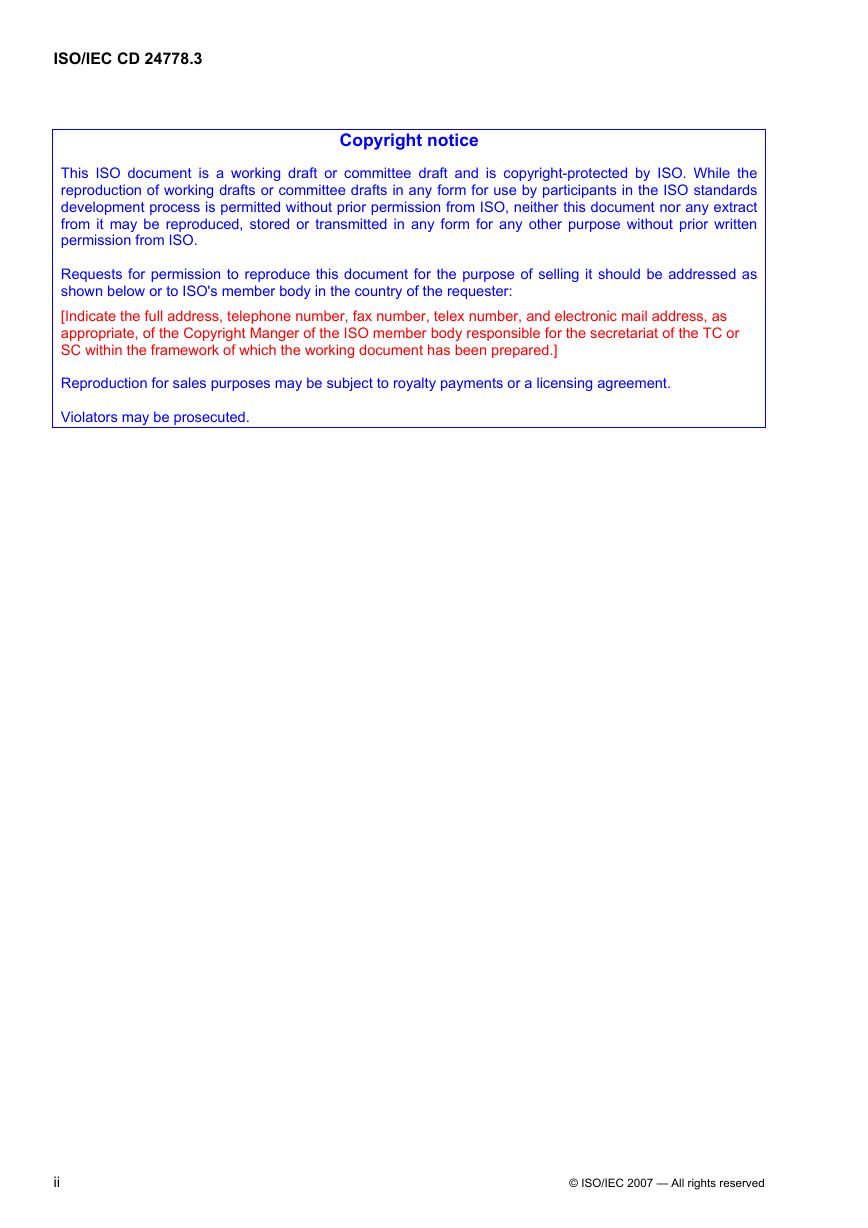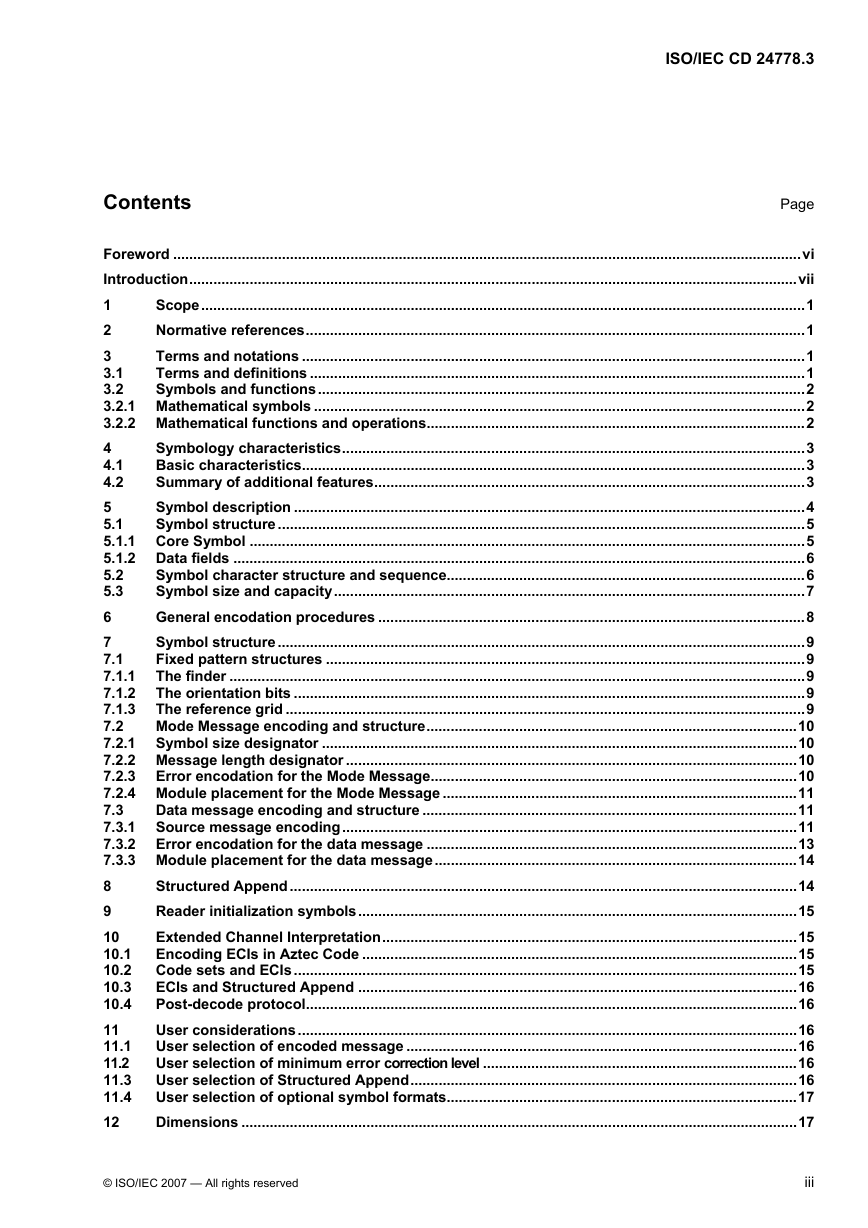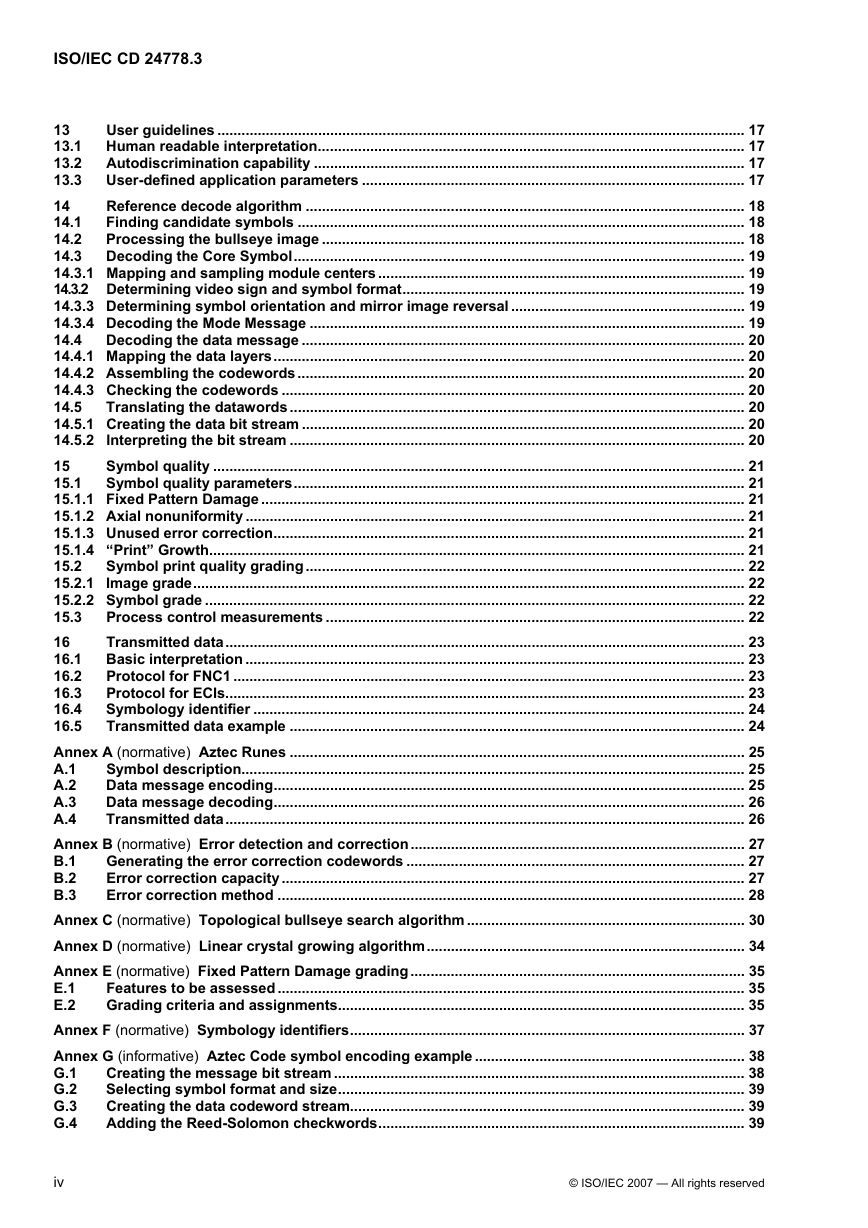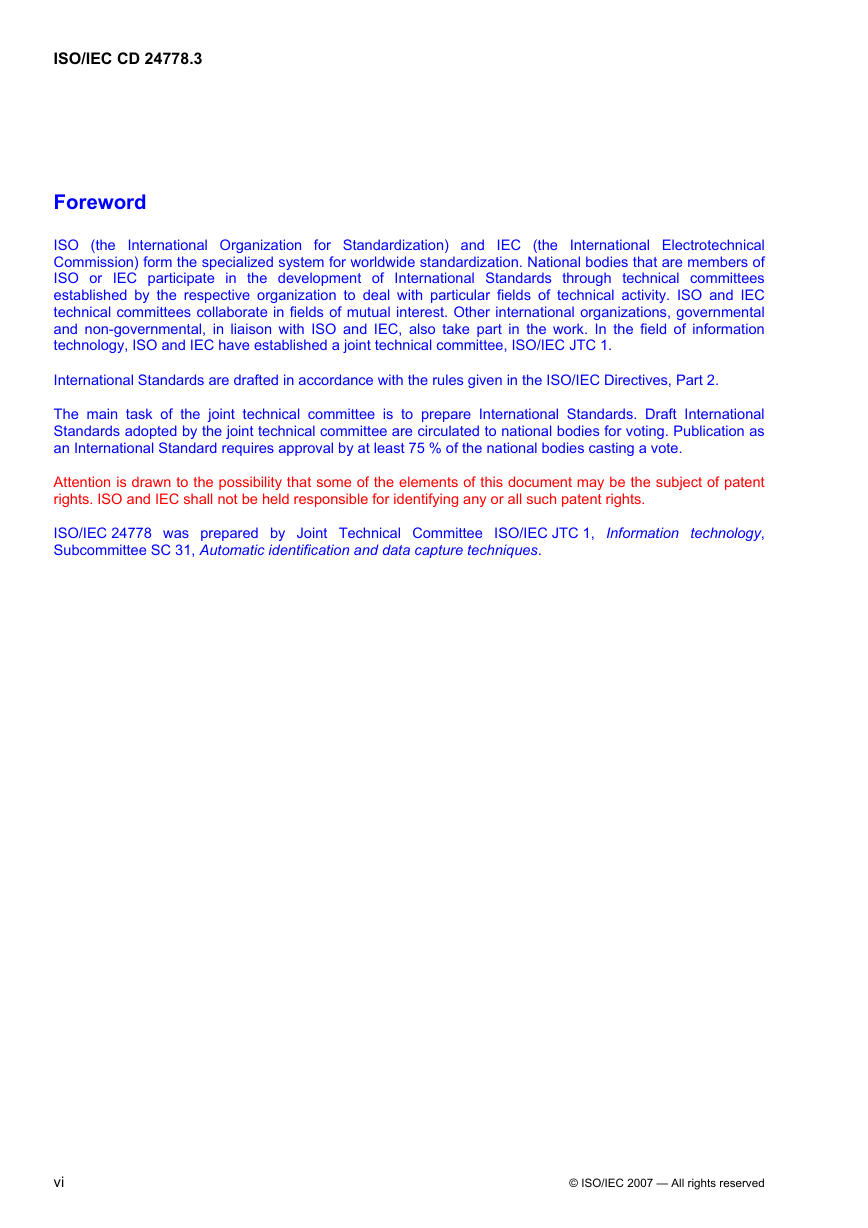Scope
Normative references
Terms and notations
Terms and definitions
Symbols and functions
Mathematical symbols
Mathematical functions and operations
Symbology characteristics
Basic characteristics
Summary of additional features
Symbol description
Symbol structure
Core Symbol
Finder pattern
Orientation patterns
Mode Message
Data fields
Reference grid
Data layers
Symbol character structure and sequence
Symbol size and capacity
General encodation procedures
Symbol structure
Fixed pattern structures
The finder
The orientation bits
The reference grid
Mode Message encoding and structure
Symbol size designator
Message length designator
Error encodation for the Mode Message
Module placement for the Mode Message
Data message encoding and structure
Source message encoding
Translation into a binary stream
Formation of data codewords
Error encodation for the data message
Module placement for the data message
Structured Append
Reader initialization symbols
Extended Channel Interpretation
Encoding ECIs in Aztec Code
Code sets and ECIs
ECIs and Structured Append
Post-decode protocol
User considerations
User selection of encoded message
User selection of minimum error correction level
User selection of Structured Append
User selection of optional symbol formats
Dimensions
User guidelines
Human readable interpretation
Autodiscrimination capability
User-defined application parameters
Reference decode algorithm
Finding candidate symbols
Processing the bullseye image
Decoding the Core Symbol
Mapping and sampling module centers
Determining video sign and symbol format
Determining symbol orientation and mirror image reversal
Decoding the Mode Message
Decoding the data message
Mapping the data layers
Assembling the codewords
Checking the codewords
Translating the datawords
Creating the data bit stream
Interpreting the bit stream
Symbol quality
Symbol quality parameters
Fixed Pattern Damage
Axial nonuniformity
Unused error correction
“Print” Growth
Symbol print quality grading
Image grade
Symbol grade
Process control measurements
Transmitted data
Basic interpretation
Protocol for FNC1
Protocol for ECIs
Symbology identifier
Transmitted data example
















 2023年江西萍乡中考道德与法治真题及答案.doc
2023年江西萍乡中考道德与法治真题及答案.doc 2012年重庆南川中考生物真题及答案.doc
2012年重庆南川中考生物真题及答案.doc 2013年江西师范大学地理学综合及文艺理论基础考研真题.doc
2013年江西师范大学地理学综合及文艺理论基础考研真题.doc 2020年四川甘孜小升初语文真题及答案I卷.doc
2020年四川甘孜小升初语文真题及答案I卷.doc 2020年注册岩土工程师专业基础考试真题及答案.doc
2020年注册岩土工程师专业基础考试真题及答案.doc 2023-2024学年福建省厦门市九年级上学期数学月考试题及答案.doc
2023-2024学年福建省厦门市九年级上学期数学月考试题及答案.doc 2021-2022学年辽宁省沈阳市大东区九年级上学期语文期末试题及答案.doc
2021-2022学年辽宁省沈阳市大东区九年级上学期语文期末试题及答案.doc 2022-2023学年北京东城区初三第一学期物理期末试卷及答案.doc
2022-2023学年北京东城区初三第一学期物理期末试卷及答案.doc 2018上半年江西教师资格初中地理学科知识与教学能力真题及答案.doc
2018上半年江西教师资格初中地理学科知识与教学能力真题及答案.doc 2012年河北国家公务员申论考试真题及答案-省级.doc
2012年河北国家公务员申论考试真题及答案-省级.doc 2020-2021学年江苏省扬州市江都区邵樊片九年级上学期数学第一次质量检测试题及答案.doc
2020-2021学年江苏省扬州市江都区邵樊片九年级上学期数学第一次质量检测试题及答案.doc 2022下半年黑龙江教师资格证中学综合素质真题及答案.doc
2022下半年黑龙江教师资格证中学综合素质真题及答案.doc